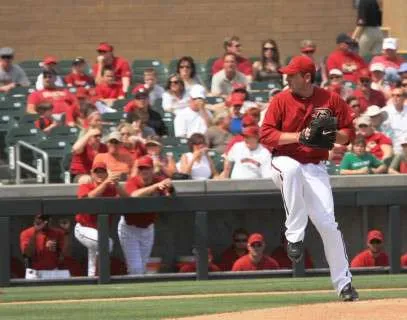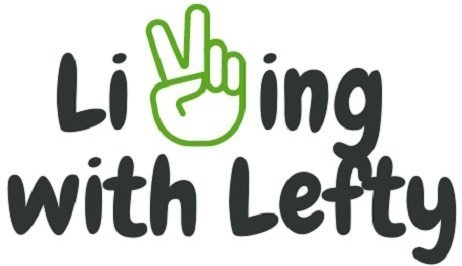You may have heard people saying that left-handed people are more intelligent than their right-handed counterparts. While we know that this is just a myth or a fact, left-handed individuals definitely make some of the best pitchers in baseball. So, naturally, they are the most sought-after pitchers by scouts.
But what do scouts look for in a left-handed pitcher, anyway? To put it simply, scouts look for an element of surprise in fastballs, arm action, delivery, changeups, breaking pitches, control, and aggressiveness, among other things, in a left-handed pitcher.
We will get into more detail regarding what scouts actually look for in left-handed pitchers below.
Table of Contents
What is Special About Left-Handed Pitchers?
Left-handed pitchers are so in demand because they are at an advantage due to their handedness. Batters don’t get as much practice against lefty pitchers, so they’re more likely to be caught off-guard when the pitcher employs certain tricks and skills that right-handed pitchers may lack. Since most pitchers are right-handed, batters don’t see it coming when a left-handed pitcher throws them a ball. This change in position messes up their minds and they end up making a mistake.
Moreover, left-handed pitchers are better at dealing with objects in space. That’s due to the right hemispheres of their brains being connected to the motor skills of the left side. Since the right side of the brain controls spatial awareness, left-handed pitchers are at an advantage as they can handle balls in space better than right-handers.
For these reasons, a pitcher is one of the best positions for a lefty on the baseball field.
What Scouts Look for When Evaluating Left Handed Pitchers
These are the top features that are are kept an eye out for when scouting left handed pitchers:

Consistent Mechanics
Scouts look for left-handed pitchers that have consistent mechanics and projectable physicality. Such pitchers can add deception to their deliveries by sacrificing the velocity to be able to spin the baseball better. They can also achieve pitch tunneling through a second, third and fourth time for a strike with these mechanics and catch the hitter off-guard due to multiple pitches looking nearly identical.
In combination with mechanics, scouts also look out for arm strength. Left-handers tend to have lower arm speeds that allow them to disrupt the hitter’s timings if they can work the corners well with their fastball.
Arm Angles and Other Skills
Scouts notice the arm angle left-handed pitchers throw from. They want pitchers who can pick off base runners by experimenting with different arm angles. They look out for the overall arm action, as it determines the fate of a curve or a slider.
Scouts want pitchers who can reach the batter’s box late in close games and hinder the opposing running games. A great arm angle can surprise the batter, and the pitcher can even achieve a four-seam fastball with it.
In addition to these factors, scouts look for factors such as the feel for a changeup, the ability to spin a breaking ball, and their command.
Average Velocity
The average velocity is the most important aspect that scouts look for in left-handed pitchers. The average velocity is the directional speed with which your fastball pitches in a game. It allows you to deliver an effective fastball.
However, the average velocity is not given equal weight for left-handed pitchers as it does for right-handed pitchers. That’s because the average velocity among left-handed pitchers is slightly lower than right-handers. A 90-91 mph velocity with an angle is considered average among right-handed pitchers. In contrast, a velocity of 88-90 mph is considered average among left-handed pitchers. In addition to the average velocity, scouts also note the movements of the baseball and how it cuts and sinks so that pitchers can deliver a better grade fastball even if the velocity is lower.
Height
When scouting a pitcher, taller left-handed pitchers are given more preference as they can throw with a unique angle that is hard for hitters to deal with. While left-handed pitchers are prized for their ability to deliver the most effective fastballs, tall left-handed pitchers are considered the cream of the crop.
In addition to their height, the physical appearance of the pitchers also comes into play. For instance, scouts would not prefer a super skinny pitcher as they may feel tired easily or get more injuries. They prefer a tall, left-handed pitcher whose body frame holds more mass and weight.
In general, scouts look for longer arms and legs, a height of at least 6’3”, wide shoulders, thick and strong lower halves, and big forearms as positive indicators of a good pitcher. They may be willing to compromise some of these requirements if they see that the pitcher is left-handed.
Mental Toughness
Since pitchers play the most important role in the outcome of a baseball game, they are given the most thought when being scouted for a team. They are in control of the game and the ball the whole time. When scouting a left-handed pitcher, scouts have certain demands for their skills.
An ideal left-handed pitcher should be extremely competitive, demonstrate strong intelligence in the game, focus hard, practice good body control for repetitive mechanics, and be mentally tough to be able to handle high pressure situations.
FAQs
What is a Left-handed Pitcher Called?
A left-handed pitcher in baseball is called a southpaw. There is some ambiguity as to the origins of the word “southpaw”, but one theory attributes it to the 19th century for pitchers who are left-handed and throw from their left hands.
What Percentage of Starting Pitchers are Left-handed?
Approximately 10% of the world’s population is left-handed. However, 21% of the 61 pitchers in the National Baseball Hall of Fame are left-handed, which is more than double that of the general population.
How Fast Does a Left-handed Pitcher Have to Throw to Get Drafted?
Since the velocity of left-handed pitchers is generally lower than that of right-handed pitchers, an average velocity of 88-90 mph will get a left-handed pitcher drafted.
